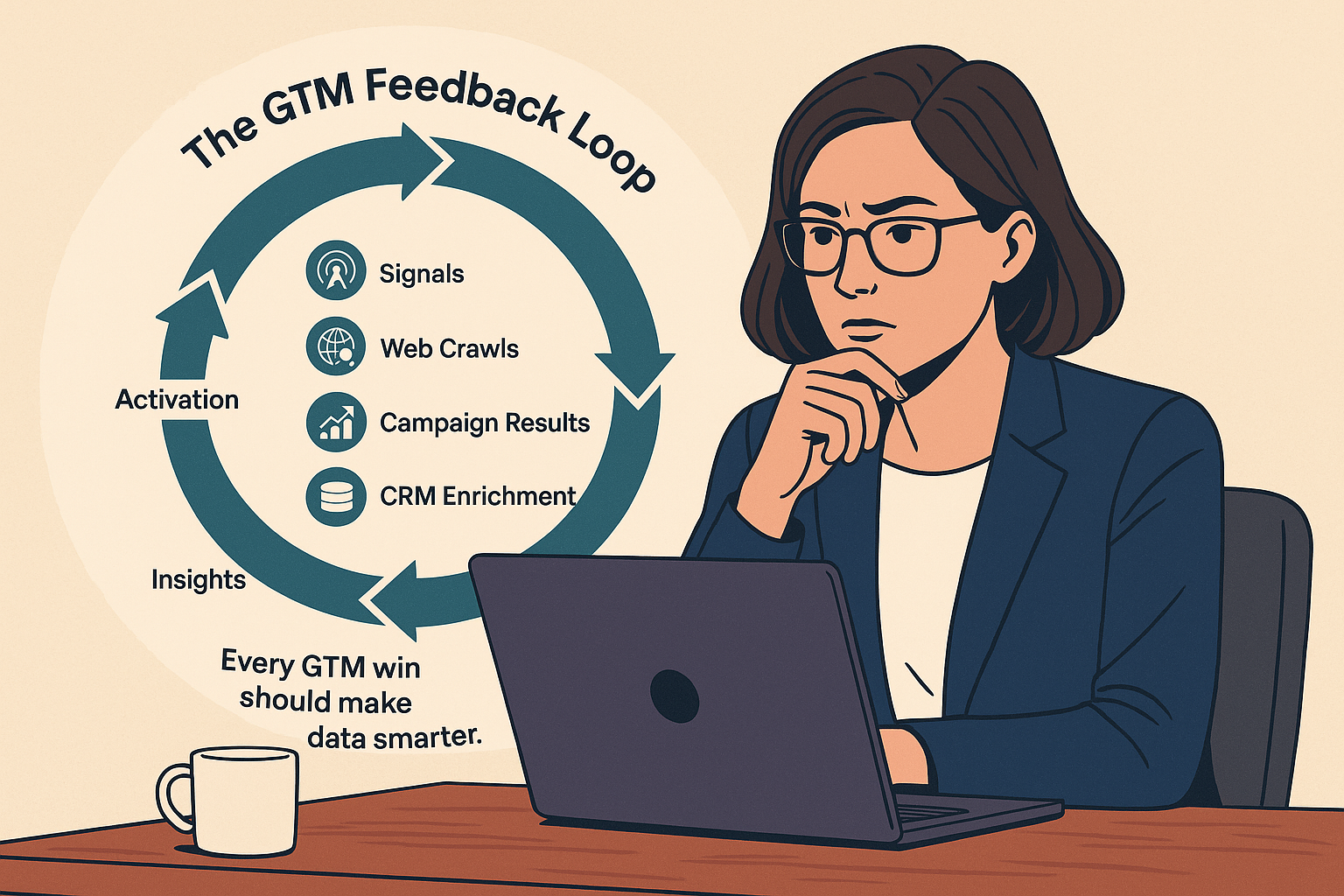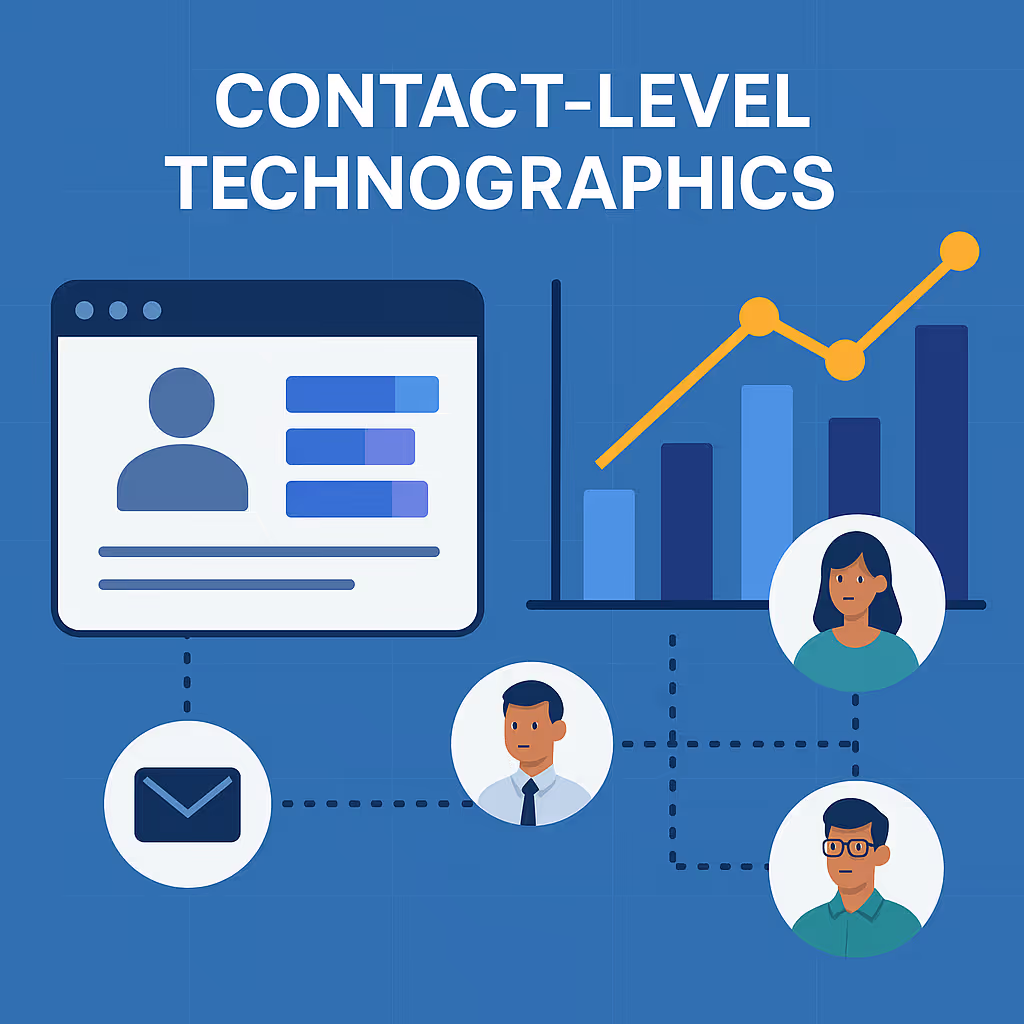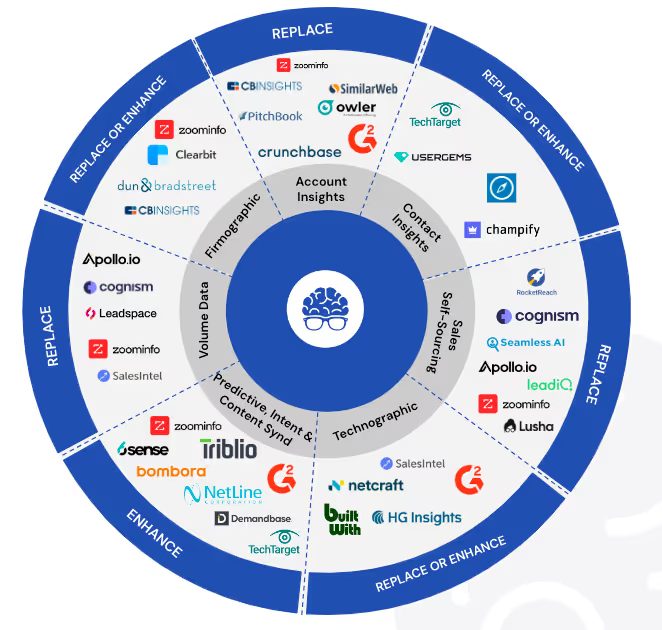The Great Misunderstanding of Modern Data
We’ve built entire organizations around the idea that data is something you buy.
You purchase a dataset, upload it into your CRM, and hope that somewhere inside those static rows and columns lies the spark of your next big deal.
But that’s not data — that’s inventory.
And in a world where markets shift daily, where job titles change faster than reporting cycles, and where buying committees form and dissolve in weeks, inventory data dies fast.
The real revolution isn’t in buying more data. It’s in building smarter systems — systems that listen, learn, and evolve.
The best GTM teams aren’t just using data anymore. They’re conversing with it.
Data That Talks Back
Think about your last campaign.
The ad copy that outperformed.
The email sequence that converted faster than expected.
The SDR outreach that mysteriously stalled.
Every one of those outcomes holds hidden intelligence — the kind that can (and should) flow back into your sourcing model.
When you close a deal, your data should get smarter.
When you lose a deal, your data should get sharper.
Yet in most organizations, that learning dies inside dashboards. It’s trapped in Salesforce reports, Slack threads, or the brain of a single RevOps analyst.
What LeadGenius is pushing — and what elite GTM teams are starting to practice — is a feedback loop that turns those outcomes into inputs.
Imagine your data not as a warehouse but as a nervous system: sensing, reacting, and strengthening with every touch.

The GTM Feedback Loop
Here’s how it works when it works:
1. Sourcing → You start with a hypothesis: who you believe your best customers are.
2. Activation → You engage them — through ads, sequences, or field campaigns.
3. Performance Data → You measure what happens: opens, conversions, meetings, pipeline.
4. Insights → You analyze the results to find what signals correlate with success.
5. Back to Sourcing → You refine your sourcing model, enriching it with those insights.
And the loop begins again — tighter, smarter, faster.
Over time, this feedback loop doesn’t just improve your data; it evolves your understanding of the market itself.
You stop selling to who you think your ICP is and start engaging who your ICP actually is — today, not last quarter.
Why This Matters Now
Five years ago, this level of feedback integration was aspirational.
Now, it’s essential.
AI tools like Clay, 6sense, and Drift promise “real-time” intelligence — but they’re only as smart as the data you feed them.
If that data is static, so is the insight.
The winners in 2026 won’t be the companies with the most dashboards.
They’ll be the ones with the most adaptive systems — where every campaign, every click, every sales interaction becomes part of a self-correcting machine.
That’s what LeadGenius was built for. Our model continuously feeds outcomes back into the sourcing engine — connecting Signals, Web Crawls, Campaign Results, and CRM Enrichment to refine both ICP precision and contact quality.
The result?
A living GTM organism that learns from its own behavior.
The Human Element
This isn’t just about automation or AI.
It’s about humility.
The feedback loop is a philosophy — a recognition that our assumptions are temporary, that our definitions of “best fit” evolve with markets, and that the most powerful organizations are those willing to learn continuously.
Great GTM leaders don’t demand perfect data.
They build systems that make data better with every decision.
Every win sharpens the model.
Every loss improves the next pursuit.
It’s a mindset shift — from ownership to orchestration, from static accuracy to dynamic adaptability.
The Future of Feedback
We’ve entered a post-database era.
Static lists are giving way to dynamic loops.
Data isn’t a product anymore — it’s a conversation.
And like any good conversation, it gets smarter the longer you engage.
The question for every GTM team isn’t:
“How accurate is our data?”
It’s:
“How fast does our data learn?”




